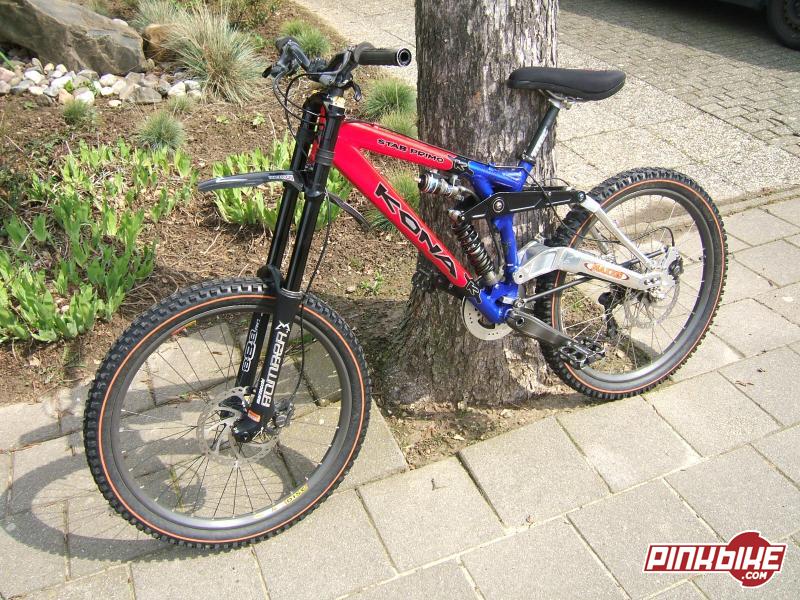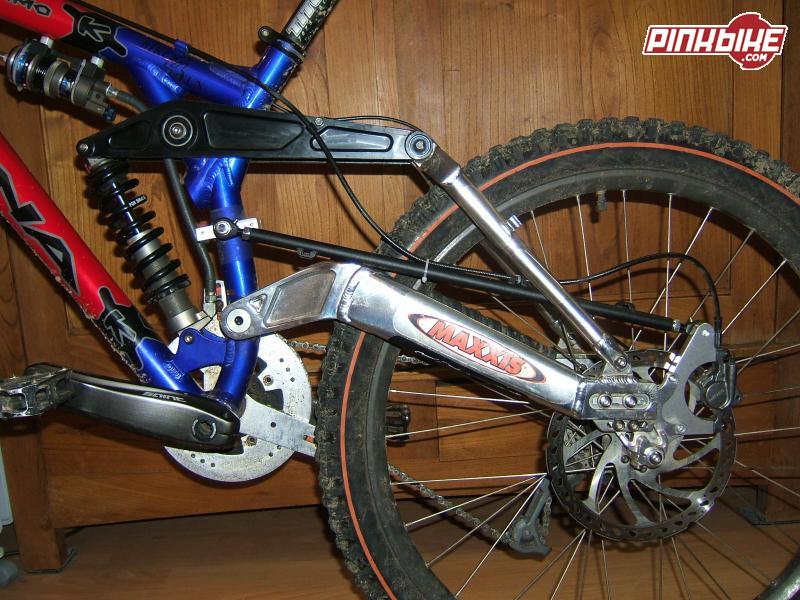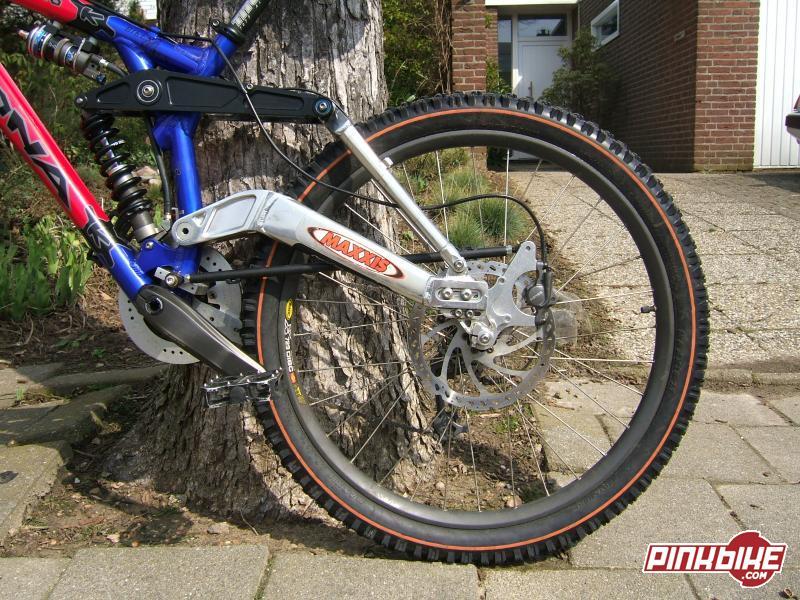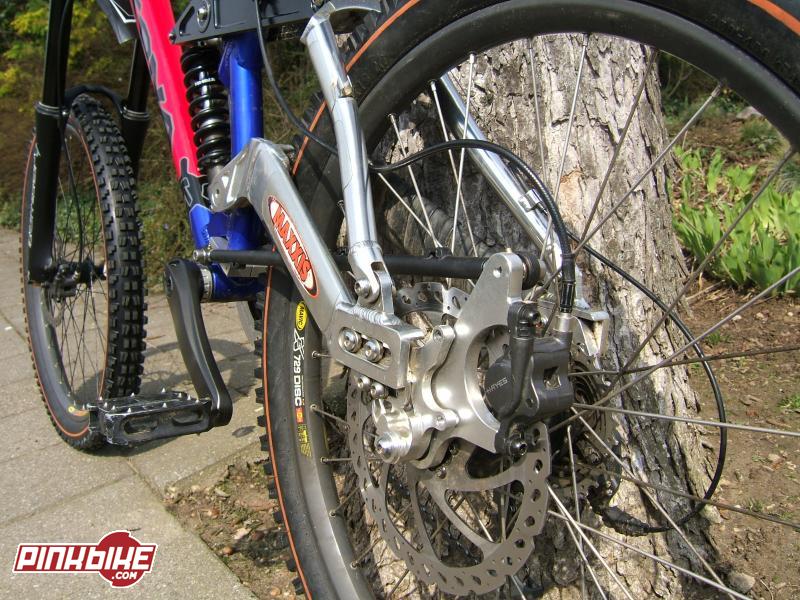Ff doorbijten, maar doe er je voordeel mee

If you want a rigorous technical discussion of this topic go to MTB Review forums and search for posts by "Steve from JH". He has posted on many topics but there was considerable discussion about 6 months ago on the Turner Forum about braking of the Horst link Turner vs. the new "Kona" Turner, and floating brakes were also discussed.
1. Due to the high center of gravity on a bike, braking forces cause an unloading of the rear suspension and an increased loading of the front suspension.
2. Almost all rear suspension designs cause some compression forces on the rear suspension when the rear brake is applied which will counteract some of the rear extension described above. The higher the single pivot the more compression there will be. The amount of compression on a multi-pivot (or a floating brake set-up) is determined by drawing a line from the rear contact patch to the instant center of the linkage. The steeper the line the more compression.
3. Most floating brakes are set up with a near parallel linkage which will cause less compression of the rear suspension but MORE compression of the front suspension. Bikes with 4 bar linkages with near parrallel top and bottom linkages like the Ellsworth and the Demo will also display this trait. Fabian Barrel (World Champion) actually sets up his floating brake in a crossed configuration to give MORE REAR compression than a standard Kona single pivot. He must feel that he likes the rear suspension compression to keep the bike low and not pitching forward. Note that on the new Kona Stab's there are 2 mounting points for the floating brake to get the parralel non compressing position and the crossed compressing position. Very few Pros are running a floating brake.
4. What most people feel that they are calling "Brake Jack" is that when braking hard most of the mass is transfered to the front suspension and therefore the rear suspension is now lightly loaded and is now over sprung and over damped, and therefore rides rough. This is regardless of the suspension or floating brake design. The best defense against this is to have a long travel bike set up with a soft suspension, keep your weight as far back and as low as possible without compromising handling, and to perform as much braking as possible when the terrain is smooth and with good traction and to let the bike run through the rough stuff as much as possible.
5. In all cases when the trail gets steep the combination of the unloading of the rear suspension due to the grade and the braking mass shift means that there is a very limited amount of traction available at the rear wheel. This means that the rear braking forces are small and the differences between different rear suspension designs or the addition of a floating brake are very small.
6. There is an effect created by the rotation of the disc relative to the caliper when the suspension is compressed. At higher speeds the rotaiton rate of the rear wheel is too high for this effect to be significant. At very slow speeds when decending through roots and rock gardens a floating brake or parrallel 4-bar design may benifit from this effect enough to be a noticeable improvement.
Wel geinige discussie i.v.m. dit onderwerp voor als je 'm nog niet kende.
 http://vpfree.pinkbike.com/bb/viewtopic ... 31642edf29
http://vpfree.pinkbike.com/bb/viewtopic ... 31642edf29




